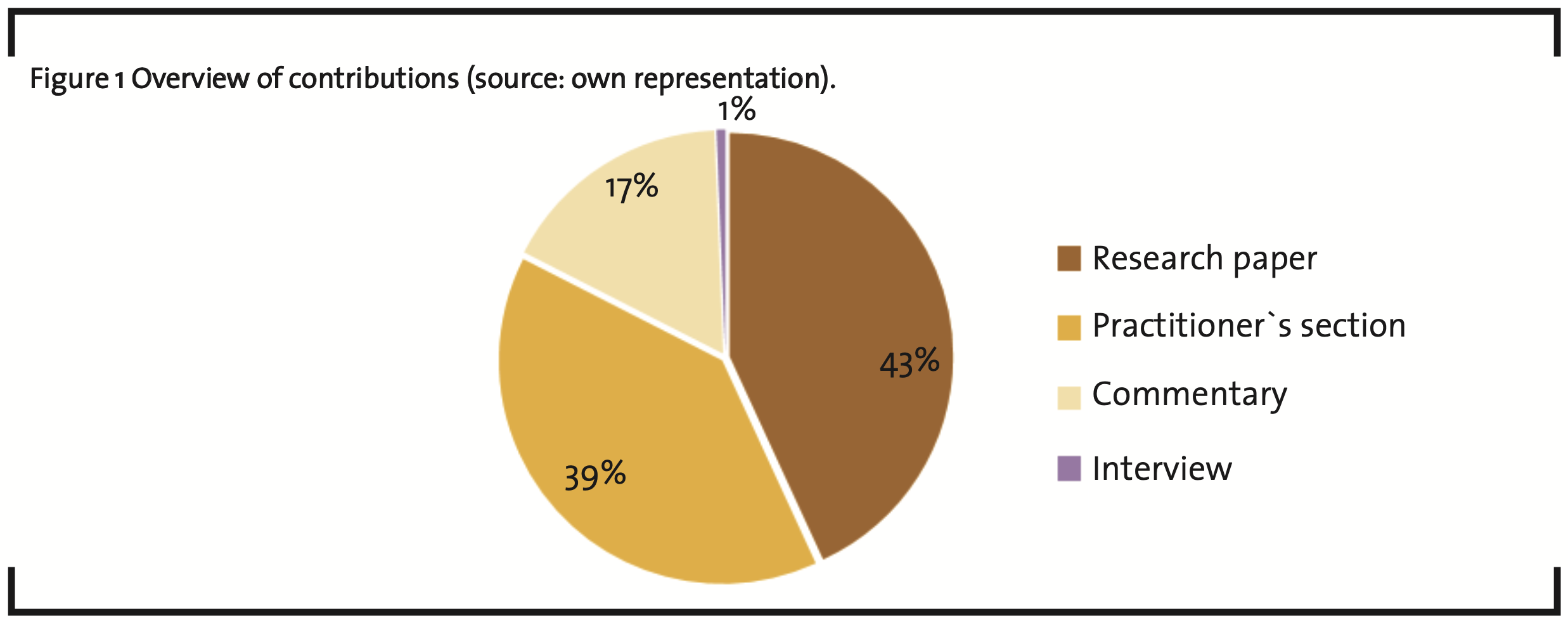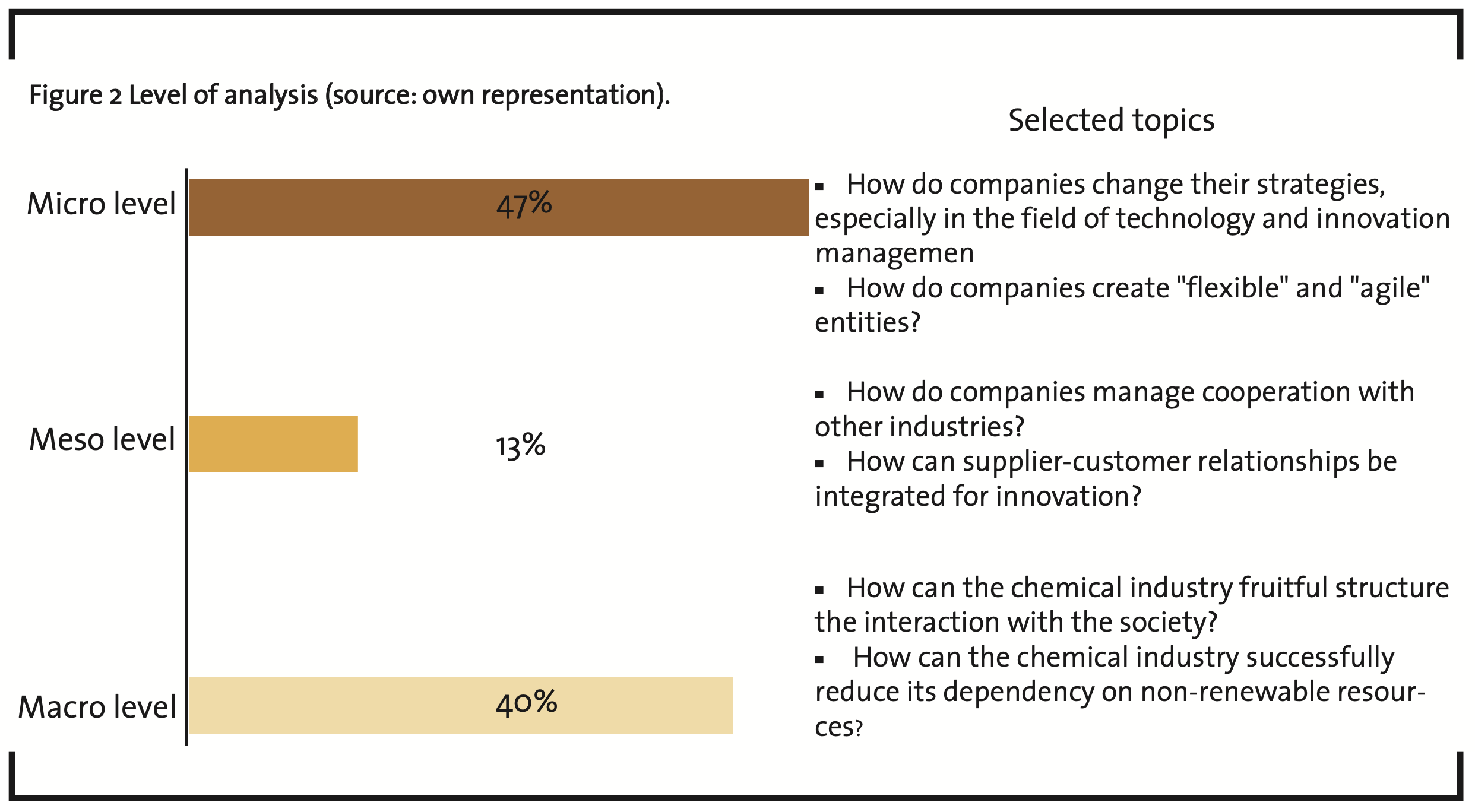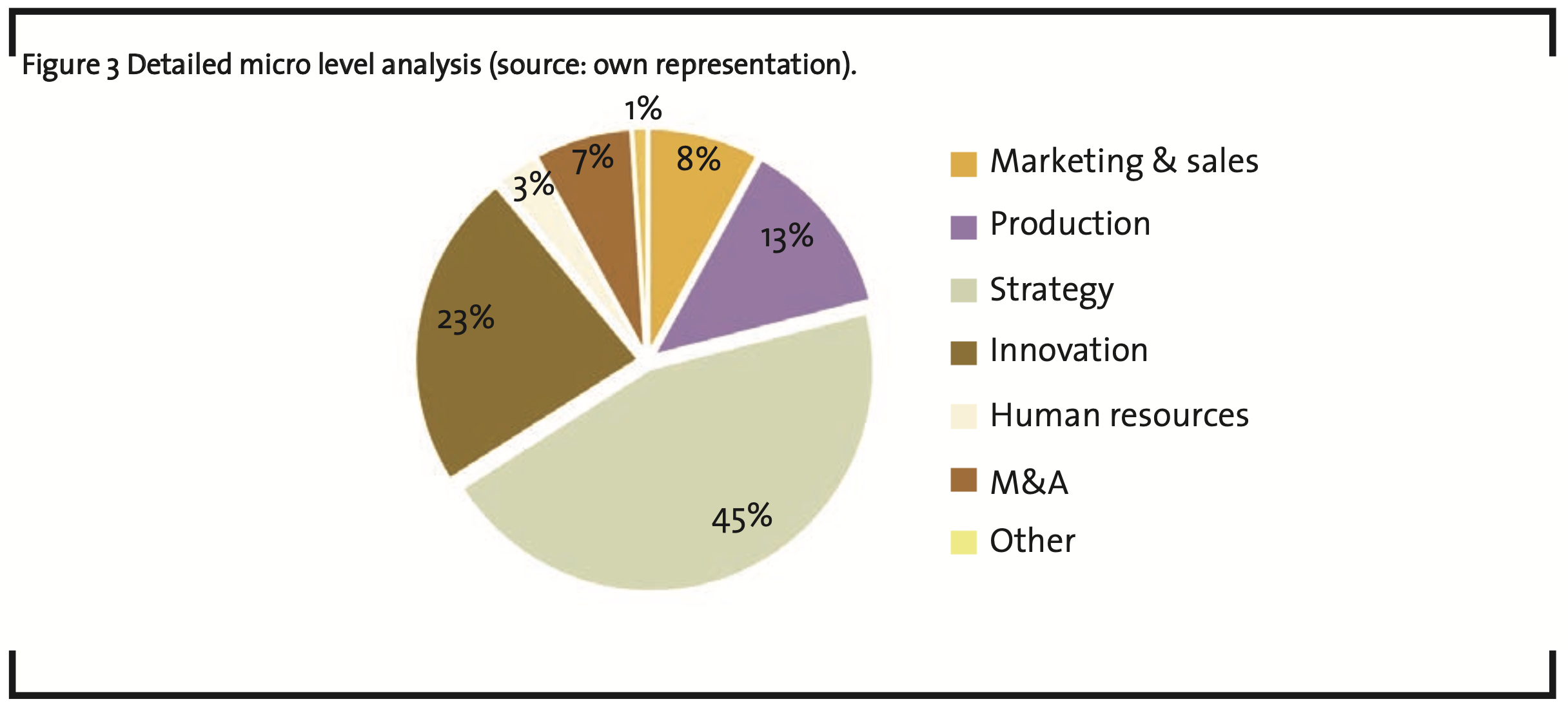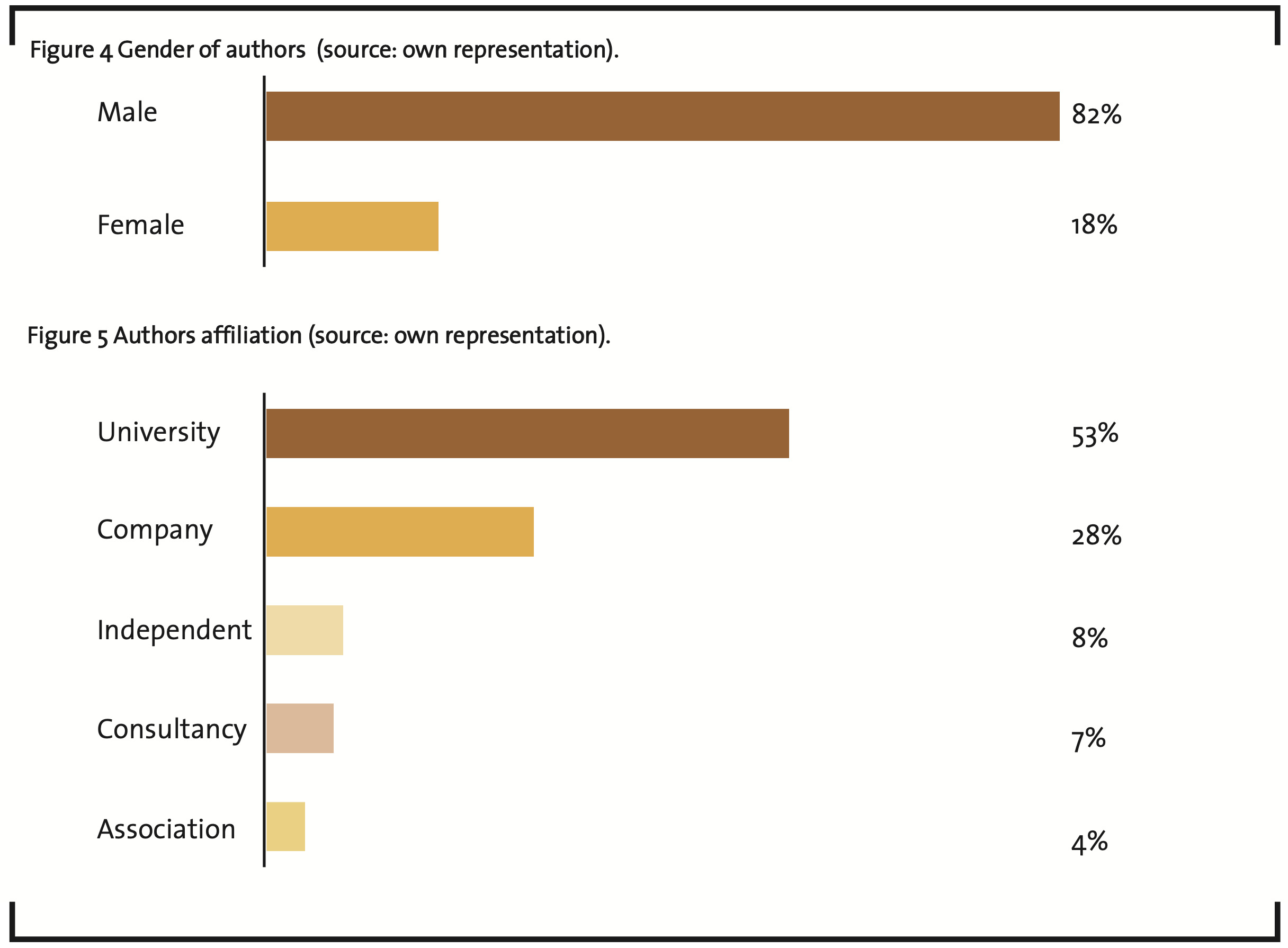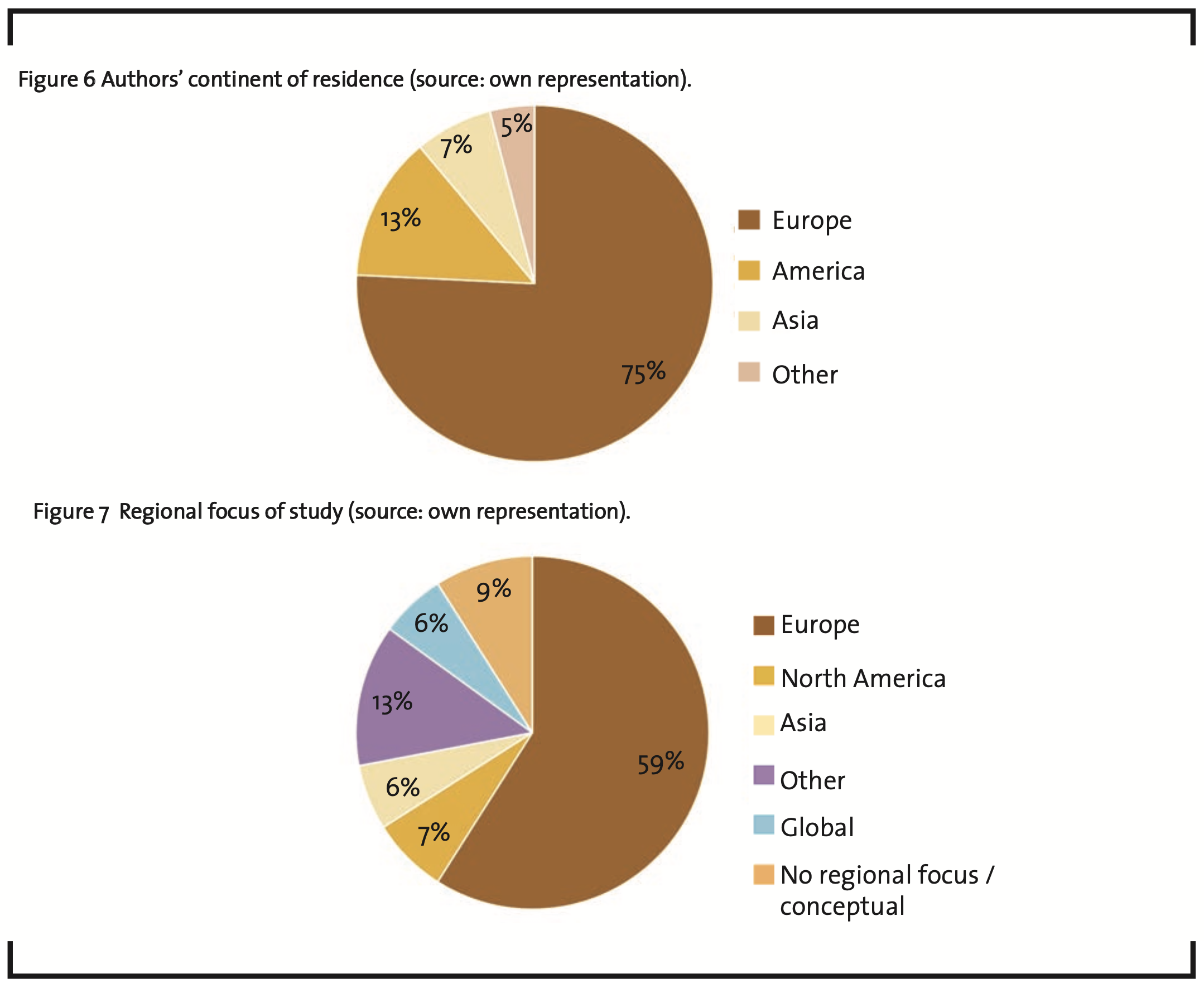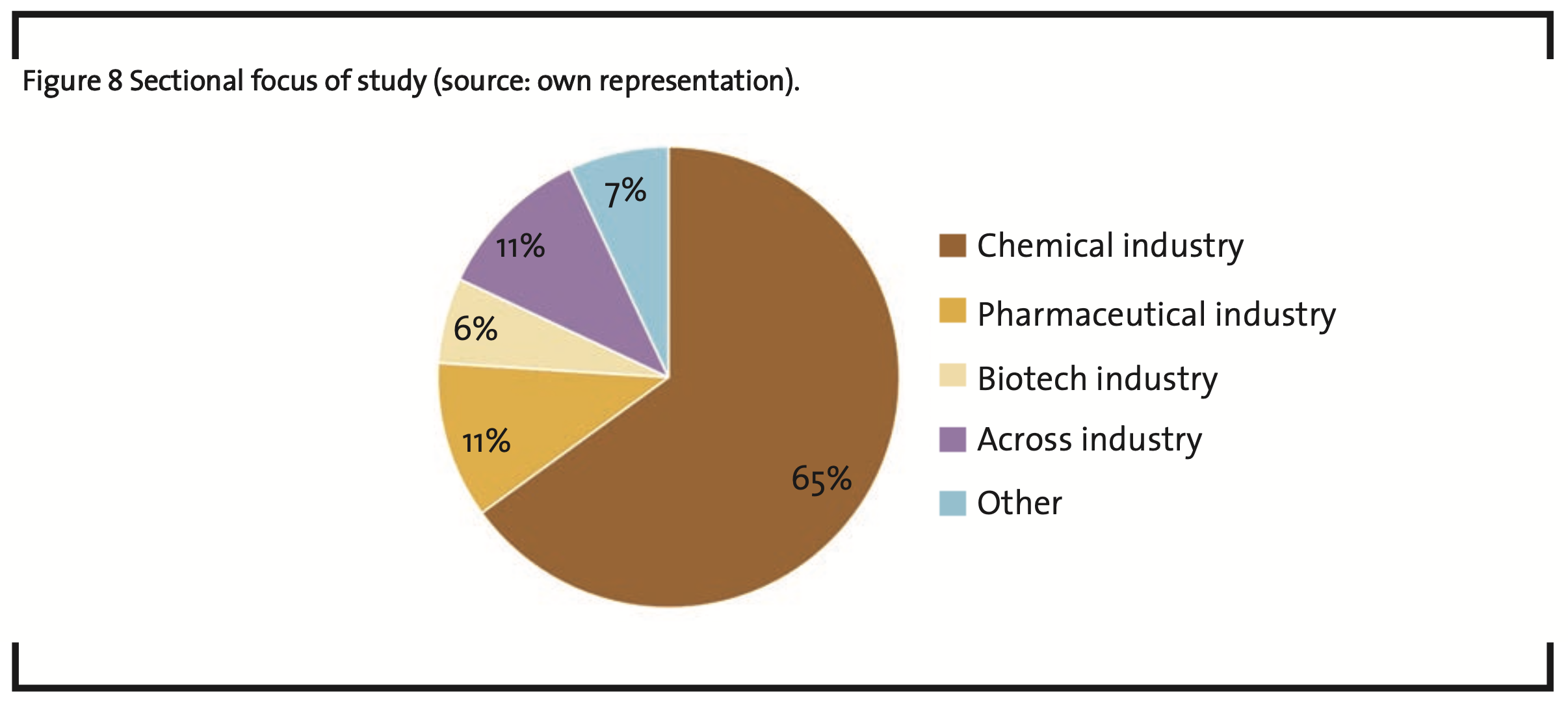Re-inventing chemistry – an industry in transition
After founding the Journal of Business Chemistry in 2004, we are proud to present the 15th volume of the Journal of Business Chemistry (JoBC) this year. Since then, 41 issues have been published with 160 contributions. In precise terms: 69 research papers, 63 articles within the practitioner’s section, 27 commentaries and one interview have been submitted, reviewed, edited, and finally been made available for the business chemistry community. The Journal of Business Chemistry was established to examine the chemical and related industries in order to shed light on their management and industrial characteristics. The industry has changed significantly since its beginnings in the 19th century and will continue to change in the future – an industry in transition.
In the present article we take a step back to review how the Journal of Business Chemistry contributes towards establishing the academic field of ‘successful management practice in the chemical industry’. For this overview we analyzed each published article in detail regarding the type of contribution, the level of analysis, the detailed func- tion in case of the micro level, the first author’s gender and affiliation, and the regional and secto- rial focus of the respective study. In addition, we ask questions about the future: How will the field of chemistry develop further? What are the challenges for science, business and society? Questions that inspired Harvard professor Georg Whiteside in his famous article “Reinventing chemistry” to propose a fundamental change in how we think about chemistry and to shift the focus away from solving problems on a molecular level to a systemic problem solving approach.
The Journal of Business Chemistry provides an international platform for students, researchers, and practitioners in universities, research institutes, companies, associations, public authorities, NGOs and consultancies. It enables dialogue between academia and business. In so doing, scholars gain access to one of the most important industrial sectors and can obtain new academic insights with which to expand management research. Managers in the chemical and related industries benefit from both the academic perspective and the practitioner’s view alike. Figure 1 provides an overview of the contribution types. About 43% of all articles deal with scientific research and their implications for the chemical and related sectors. The practitioner’s section, where current developments in the industry are described and examined, represents around 39% of all articles. To inform the business chemistry community from various perspectives and to trigger fruitful discussions, 17% of all contributions are commentaries and roughly 1% are interviews. We believe that this vital mix of contributions makes the Journal of Business Chemistry attractive to its readers and will – of course – constantly review the mix based on the feedback we receive and are open to integrate other contribution types as well.
The chemical and related industries, such as pharmaceutical and biotech, are characterized by a continuous change on the macro, meso, and micro level. In order to equip readers with an encompassing understanding, the Journal of Business Chemistry provides new insights either stemming from research or practice regarding the three levels of analysis, which are displayed in figure 2.
The macro or contextual level refers to factors that can have an impact on companies’ performance but are beyond their control. Examples are economic, technological, social as well as regulatory developments such as climate change or the demographic shift in different economies. 40% of all articles relate to the macro level and link relevant trends to different subsegments in the chemical industry. We believe that from this macro level different and partly contradictory factors will shape the future of the chemical industry. Currently, the digitalization and the concept of the circular economy receive a lot of attention. But the influence of these trends varies across industry segments. However, there is consensus about an environment which is described by volatility, uncertainty, complexity and ambiguity (VUCA). In the future, the Journal of Business Chemistry will continue paying attention to the latest trends, in particular digitalization and circular economy.
The meso or transactional level covers topics around ‘market forces’ rooted in a company’s operating business, such as suppliers, customers, competitors, distribution, alliances and cooperations, and the management thereof. Since the journal’s founding, 13% of its published articles have dealt with the meso level. In the past, various articles explored different facets of collaboration, e.g. how to collaborate with lead users or how knowledge is shared in heterogeneous collaborations. Ecosystems and clusters as drivers for innovation will likely continue to gain traction in the upcoming years. Originally stemming from biology and ecology, the ecosystems analogy has been widely adopted in business studies and practice. In ecosystems where companies work collaboratively with various partners, as they possess required complementary capabilities, the complexity of the system increases dramatically. In tightly interwoven ecosystems characterized by highly interconnected stakeholders, companies with the ability to manage complexity will be more innovative and thus enjoy a powerful competitive advantage in their field. We are looking forward to contributions from theory and practice on this issue and expect that the “meso level” will increase in importance for theory and practice as new competitive arenas may be found in the thematic area or regional ecosystem.
It is important for companies to respond to changes on a micro or organizational level, which focuses on companies as such. Therefore, companies ought to reallocate resources in accordance with new realities. Most articles, about 47%, analyze the micro level. Business functions and organizational capabilities play a pivotal role in companies’ value creation process. How business functions are set up, embedded in organizations, and executed has profound implications for performance and output.
Figure 3 gives an overview of which business functions have been addressed by the articles. The detailed micro level analysis shows that strategy and innovation are the prominent topics with 45% and 23% of all articles, respectively, followed by production (13%), marketing and sales (8%), mergers and acquisitions (M&A) (7%), human resources (3%), and others (1%).
Even though the chemical industry is influenced by a set of different forces, it appears likely that formulating the right strategy and allocating resources will remain the key drivers for achieving sustainable competitive advantage. The dominant trend of digitalization brings about an urgent need to find the right strategy. For a long period of time, the asset-intense chemical industry has profited from a comparatively stable environment and business model: chemical knowledge was translated into products, which were produced efficiently in highly integrated industrial parks, while constant consumption by customers and end-consumers ensured attractive growth rates. In recent years, the business models of companies in the chemical, pharmaceutical and biotech industries have become multidimensional – not only the technical function of a molecule, but the created value in a specific field becomes the anchor for value creation and capture. Additionally, a digitally enabled platform economy could radically alter the production circumstances. In future scenarios, the production of chemicals might be offered as a service; according to this, the mere knowledge about a chemical formula and its ownership would be the key driver for value creation and capture as opposed to the conventional model with an integrated production. Considering this, the drawback of capital-intense production facilities with their associated inflexibility resolves unexpectedly. Consequently, entrepreneurs could be encouraged starting their own business in the realms of chemistry.
Given these developments, the scope of M&A activities could change from economies of scale to economies of scope. As prevailing economic conditions (e.g. low interest rates) trigger a seemingly never-ending wave of mergers and acquisitions, and company valuations reach ever increasing records, companies look for efficiency gains through economies of scale. Companies in the chemical industry which start gearing their M&A activities towards economies of scope could gain a sustainable competitive advantage. Therefore, companies ought to reconsider their concept of a chemical company. It is vital to evolve from a mere producer of chemicals to a solution provider. The chemical industry is no longer characterized by and dependent on advancements in the academic field of chemistry – although it will be a substantial part of the solution. Rather, the future of the industry will depend on its ability to integrate findings from other related disciplines. As the chemical industry is regarded conservative, fundamental changes in the guiding principle might be accompanied by cultural issues. Thus, successful companies will possess distinct transformation capabilities. According to this notion it is decisive for future success to attract the right people. For upcoming generations sustainability, the sense and impact of their work to find solutions for the grand societal challenges is becoming one major motivator. Employees regarded as high potential possess not only in- depth knowledge of their respective discipline, but also the courage and ability to question prevailing opinions, work and thinking routines. In the context of digitalization, job profiles will look completely different than 10 years before. Employees with an interdisciplinary education will be well prepared for future tasks. In best case, a thorough chemical understanding is combined with other disciplines, such as digital literacy. There will be a high demand for professionals like a ‘digital chemist’.
Authors are one essential factor for creating high quality publications. Figure 4 presents the gender of the first author. The chemical and related industries are often conceived as very conservative and male dominated. Up until now, 82% of all contributors have been male, while 18% are female. Increasingly, vacant management positions are filled by women. The Journal of Business Chemistry promotes the equality between men and women in science and practice. Therefore, we encourage women to submit their manuscripts.
In terms of author’s affiliation, depicted in figure 5, 53% of all authors work at universities, 28% are employed at companies, 7% are consultants, 9% work independently, and 4% are employed at associations. These percentages indicate the strong foundation in academia, while still being open for multifaceted practitioners’ views.
With regards to the continent of residence, Europe stands out with 75%. Our authors mainly live in the Germany, United Kingdom or Switzerland. Due to the fact that the Journal of Business Chemistry was founded by the Institute of Business Chemistry in Münster, Germany, it is not surprising at all that this country stands out in terms of authors living there. Another reason is the establishment of Business Chemistry as a course of study in the German and Swiss region, which gives an additional explanation for predominance of German authors. The interdisciplinary approach of Business Chemistry or similar study programs is generally not pursued in North and South America. However, 11% of authors are living in North or South America, while authors mainly live in the USA. 7% of authors reside in Asia, and most of them in China. Other authors (7%) come for instance from Australia, South Africa, Abu Dhabi, Israel, or Tasmania. In the future, we would appreciate contributions from locations outside of Europe. Authors living in the US, China, and India are still underrepresented compared to Europe.
Nowadays, the economy is highly globalized. This is especially true for asset-intensive industries like chemicals and research-intensive segments like pharmaceuticals, and the biotech industry. While in the past, the USA and Europe have experienced high growth rates because of being continuously innovative either incrementally or radically, the demand and innovation activities are shift- ing to Asia, namely India and China. Contributions with a regional focus help to understand local characteristics, whereas studies conducted worldwide can indicate global trends and developments. Figure 7 visualizes the regional focus of published articles. 6% of authors conducted a study on global level. 59% of studies focusing on Europe as a region. The number of studies in North America and Asia are comparable with 7% and 6%, respectively. Other locations, for instance Australia, Brazil, Cuba, and Taiwan, account for 13%, and 9% do not have a regional focus and are rather conceptual. As the Middle East was not represented adequately with respect to its upstream industry, future articles are welcomed to examine the implications of the current business environment for the oil and gas indus- tries in that region. We expect a decrease in importance of the European and American markets for the benefit of China, India and other growing countries in Asia. Accordingly, the latter are should be more emphasized and analyzed in future contributions with regards to the economic importance of the respective markets. Nevertheless, it will be interesting to see how the chemical industry will cope with current conditions and translating the risks into opportunities.
Figure 8 displays the sectorial focus of study. On an aggregated level it is distinguished between the chemical, pharmaceutical, and biotech industry as well as studies conducted across industry sectors, and other related industries. Not surprisingly, 65% of submissions examined the chemical industry, while 11% analyzed the pharmaceutical industry and 6% the biotech industry. 11% of studies were conducted across industries, while 7 % of studies belong to other industries, such as healthcare, food or nanotechnology. In future we expect more studies relating to cross industries as industrial boundaries are becoming increasingly blurred. Additionally, collaboration across industrial sectors will be a crucial for sourcing complementary capabilities in order to trigger innovations.
Over the course of 15 volumes, the Journal of Business Chemistry has accompanied and present- ed the development of the industry following a dual approach. The Journal of Business Chemistry provides a platform for discussion about future questions of the chemical industry. Therefore, the chemical industry should continue to examine: What will our role be regarding academia, the industry itself including suppliers and customers, and regarding society? Put differently, who do we want to be in the future? With regards to upcoming mega trends, there are plenty of topics and developments that may sharpen the field over the next 15 years. Still, one should keep in mind that changes in asset-intensive industries and large corporations will take a huge effort and time, and that daily business operations continue as a driver to realize efficiencies in productivity.
For a successful future, the chemical industry needs to do two things. First, the industry should continue to follow the path of opening itself to academia and chemical-related disciplines, to its and related industries, and towards society as a whole with all the stakeholders. Secondly, the chemical industry has to focus on one of its core abilities: the ability to continuously invent better solutions to specific problems. As history has shown, the chemical industry was able to substitute tradition- al materials like wood, paper, or metals with ones with better performance or higher efficiency. Now again, it is time to find better solutions to keep and enhance our living standard.
The Journal of Business Chemistry would like to thank all authors, reviewers, and editors who took part in the process of establishing the field of management issues in the chemical industry. Furthermore, we thank our multiple stakeholders for their positive feedback on our interdisciplinary (“business meets chemistry”) and boundary spanning (“academia meets practice”) approach.
References
Chandler, A. D. (2009): Shaping the industrial century: The remarkable story of the evolution of the modern chemical and pharmaceutical industries (Vol. 46), Harvard University Press.
Dechema (2012): Chemie als Innovationstreiber in der Materialforschung, Frankfurt am Main.
Expert interviews at the VCW Conference “Changing Value Creation: Chemical Industry between Product Innovations and New Business Models”, 26th January 2017, Frankfurt.
Henderson, R., Gulati, R., and Tushman, M. (Eds.). (2015): Leading sustainable change: An organizational perspective, OUP, Oxford.
Hofmann, K., and Budde, F. (2006): Today’s Chemical Industry: Which Way Is Up?, Wiley-VCH, Weinheim.
Kortmann, S., and Piller, F. (2016):Open Business Models and Closed-Loop Value Chains, California Management Review, 58 (3), pp. 88-108.
Leker, J., Gelhard, C. and von Delft, S. (2018): Business Chemistry: How to Build and Sustain Thriving Businesses in the Chemical Industry, Wiley, Frankfurt am Main.
Lieder, M., and Rashid, A. (2016): Towards circular economy implementation: a comprehensive review in context of manufacturing industry, Journal of Cleaner Production, 115, pp. 36-51.
Mohr, R. and Utikal, H. (available in 2018): Future Chemistry – Glimpses into the world of tomorrow, F.A.Z.-Institut, Frankfurt.
Porter, M. and Kramer, M. (2011): Creating Shared Value, Harvard Business Review, 89(1), pp. 62-77.
Royal Society of Chemistry (2009): Chemistry for Tomorrow’s World – A Roadmap for the chemical sciences, available at http://www.rsc.org/globalassets/04-campaigning-outreach/tackling-the- worlds-challenges/roadmap.pdf, accessed 28 January 2018.
Van de Ven, A.; Poole, M. (1995): Explaining development and change in organizations, Academy of Management Review, 20(3), pp. 510-540.
Van de Ven, A.; Sun, A. (2011): Breakdowns in Implementing Models of Organization Change, Academy of Management Perspectives, 25(3), pp. 58-74.
Verband der Chemischen Industrie e.V. (VCI) (2016): Chemie 4.0 Wachstum durch Innovation in einer Welt im Umbruch, VCI, Frankfurt am Main.
Whitesides, G. M. (2015): Reinventing chemistry, Angewandte Chemie International Edition, 54 (11), pp. 3196-3209.
World Economic Forum (2017): Digital Transformation Initiative – Chemistry and Advanced Materials Industry, WEF Reports, Geneva, pp. 1-36.
